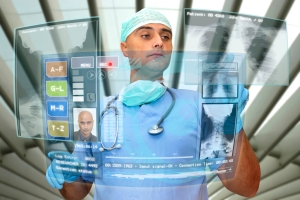[We need to] “…begin to think about the concept of translating conversations, as opposed to translating documents. We need to set standards for and train our interpreters to quickly and accurately “interpret in writing” the content of patient-provider emails and texts.”
Consider the following scenarios:
- A school switches its primary communication method with parents from a monthly print newsletter sent home with students to multiple website updates a week.
- The Presidents of Colombia, Mexico, Chile, Peru, Costa Rica and Panama hold the first-ever virtual summit of multiple Presidents, using Cisco’s Telepresence Technology.
- Walmart conducts a pilot run of talking drug prescription labels via mail order and onsite pharmacies.
- A patient is told to access their test results online and is given a link to a website that will walk them through the process.
- Your bank sends a text message alerting you that you are overdrawn on your account.
These are just a sampling how technology is changing the way we communicate. Increasingly, the interpreting profession is addressing how traditional service delivery models are shifting. We are learning to use video, VOIP, telephonic and even app platforms when interpreting. Yet, this is just the tip of the iceberg. Underneath are tectonic shifts in the way businesses, schools, and the healthcare industry are structured and delivering services.
To read more of this blog courtesy of Katharine Allen, click the link below.
